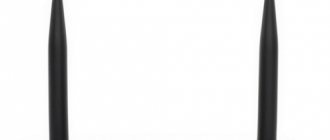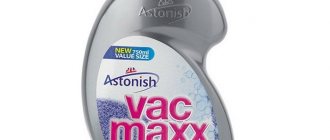Review of 7 electric and pneumatic nailers: personal experience
A nailer is an automatic tool for quickly hammering nails.
Commonly called a nailer. There are models with pneumatic, electric and gas drive. Pneumatic options are characterized by low cost per shot; battery and gas tools provide freedom of movement for the master.
Any nailer is good because it does not require excessive effort; It does not bend nails, even when driven at an angle.
All models, except the large “frame” ones, can be easily operated with one hand. The work uses hardware that is fastened in 10-100 pieces on cassettes and up to 300 on tapes.
Several options for using nailers:
Used in construction and carpentry. It is necessary in processes where hardware is consumed in kilograms. It is in demand for amateur and professional finishing of objects, when it is necessary to ensure high speed of work.
Table of main characteristics of nailers CharacteristicsOptionsFeatures
| Drive unit | Electrical network | Hammers hardware no longer than 50 mm. |
| Electric battery | There are models for any fastener, but their batteries are demanding in terms of operating conditions. NiCd and Ni-MH require a full charge-discharge cycle - from 0 to 100%. It is inconvenient to work in this mode, so they do not last long. For Li-ion and Li-pol, complete discharge is undesirable, so for continuous operation you need to have at least three of them with you. | |
| Pneumatic | The lightest and most wear-resistant tool. Easy to repair, profitable to operate. | |
| Gas | The most expensive and most powerful equipment. I recommend it for installation work on concrete and steel. | |
| Store type | Rack and pinion | Convenient where a drum won't fit. You can quickly change hardware. Fits up to 100 consumables. |
| Drum | Pneumatic tools only. Which only uses nails. There are from 150 to 300 hardware on the drum belt. Therefore, on the frame and, especially, on the roof, the master will be less distracted by reloading the tool. | |
| Type of tool according to the task performed | Frame | Up to 6 kg, with a spacious magazine. The heavier the tool, the less recoil when fired. And it's easier to hammer in large nails. Heavy frames allow you to work with hardware up to 220 mm in length without much strain. |
| Roofing | Up to 2.5 kg, for nails up to 50 mm long with heads Ø 8-10 mm. | |
| Sheathing | Up to 4 kg, nails up to 90 mm long. | |
| Finishing | Up to 2.5 kg, for studs, pins up to 60 mm | |
| Universal | Up to 2 kg, works with staples, pins, thin nails, up to 35 mm long. | |
| Hardware | Staples | Fabric holds the strongest hold on wood - ideal for furniture makers. |
| Studs, pins (12-64 mm) | 2 pins at different angles on the edges of the lining will be cheaper and less noticeable than a pair of nails. | |
| Nails (12-220 mm) | Nails with heads are more reliable than others in construction work, for exterior decoration, and in the production of wooden containers. | |
| Tilt angle of hardware, degrees | up to 15 | Hardware for finishing nailers and for tools with a drum magazine. The lower the degree, the more problematic it is to hammer a nail at an angle. |
| 20-34 | Construction and finishing tool with rack frame. The greater the slope, the more expensive the hardware and the easier it is to hammer them into an angle. | |
| Type of driving energy | Electricity | A networked tool consumes from 2 kW/h - you need to take into account the condition of the wiring in the workshop. Rechargeable – with 1-2 batteries, it is good for working on electrified objects. 3 or more batteries allow you to be away from mains electricity for a day. |
| Compressed air | The maximum operating pressure for pneumatic tools is 7-8 bar. But everyone consumes air differently: from 0.5 liters to 3-4 liters per shot. Therefore, the compressor that can pump up the receiver to operating pressure will be suitable faster than you use it up. | |
| Liquefied gas in cans | Original consumables are supplied along with hardware. The cost of a shot reaches 8-10 rubles. Only for contract work. | |
| Secondary functions | Force adjustment | The impact power of the striker is adjusted taking into account the material being processed and the hardware used. |
| Repeat shot protection | Prevents two nails from coming out after one press when firing in automatic mode. | |
| overheat protection | Turns off the electric motor if it does not have time to cool down during intensive operation. | |
| Blank shot protection | Eliminates the release of the striker if there are no nails in the holder - in order to avoid making unnecessary dents and holes in the material when the nails suddenly run out. |
In the case of air guns, an important characteristic is air consumption. But it is impossible to classify an instrument based on this factor.
Because all models have force adjustment, which also affects consumption. In addition, some manufacturers indicate how much air is needed per shot, while others indicate how much air is needed per minute of continuous shooting.
Flow rate and clogging rate are needed to determine a suitable compressor.
What do you think nailer is:
Source: https://tagaev.com/obzor-nejlerov/
Pneumatic nailer
As a rule, pneumatic tools are more powerful and lighter in weight, but their operation requires a compressor as a source of compressed air and high-pressure hoses to connect the nailer to the compressor. This results in a connection between the need for electricity.
Video about pneumatic nailer:
There are a number of advantages for pneumatic nailers:
- they are easy to use and do not require special skills and knowledge (take it and work);
- have compact body dimensions;
- they have a high shooting speed - 3 shots per second;
- have moderate weight (1–3 kg);
- easy to maintain;
- they are not afraid of getting wet - you can work in the rain;
- high power;
- low noise and recoil;
- does not require permits (like a powder pistol);
- low cost of the tool.
The disadvantages include the following points:
- the need for air pressure hoses;
- connection and dependence on electricity (for the compressor);
- you need a compressor or compressed air in cylinders
Comparison of rack and drum nailers
When choosing a working tool, it is important to understand that each of the devices has its own scope of application.
Of course, you can hammer a nail with the handle of a saw, but using a hammer specially designed for this will be much more convenient. The same goes for nailers.
Despite the fact that at first glance they all perform the same function (driving fasteners), their scope of application directly depends on the model.
For example, electronic guns are used for finishing work, while gas guns are used for roofing. In this article we will take a closer look at where and when rack and drum nailers are used, and also consider all the advantages and disadvantages of these tools.
Construction of frame structures: rack nailer
The technology of erecting frame structures is a new milestone in the history of construction. Thanks to it, it became possible to speed up construction work several times, eliminated the need to create a massive foundation, and also significantly reduced the consumption of lumber.
Despite the fact that many frame structures are assembled using self-tapping screws, it has been proven that a nail can withstand twice the load, and a nail driven in with one blow can withstand 3.5 times.
That is why rack nailers are most often used to create frame structures.
Not only do they completely eliminate the possibility of breaking the fastener, but they will also drive the nail so tightly that even its head will not get in the way.
The design of such nail guns is usually designed to work in hard-to-reach places, which is another undoubted advantage over conventional hammers and screwdrivers (with which it is not always possible to “crawl” into difficult areas). With a rack nailer everything is much simpler: put it in - press - done!
The scope of application of the rack gun covers almost all frame work: construction of a house, cottage, household buildings, fences and enclosures. Moreover, such nailers are often used to work with panel structures.
When purchasing, you should pay attention to the additional capabilities of the tool.
For example, many pistols come with special protection against repeated shots or with spikes that prevent the possibility of slipping.
Scope of application of drum nailer
It is a well-known fact: the more nails you fit into a tool, the heavier it is. Therefore, drum nailers are usually classified as the “heavy artillery” in the world of repair work. A fully loaded pistol weighs around 4-6 kg. However, its power significantly exceeds the power resource of a rack nailer.
Such a pistol is loaded with drum nails - round rolled ribbons containing a certain number of nails. Like rack nailers, drum nailers are often used in the construction of frames, so the nails loaded in them are quite large in size (from 50 mm).
Another distinctive feature of such guns is their high punching power, which makes it easy to fasten OSB sheets together. Typically, drum nailers are usually supplied with a special nail insertion depth regulator, which greatly simplifies the work.
The scope of application of the drum nailer remains in the area of creating frame structures, fences, and domestic buildings. However, its power and penetrating force make it possible to work with thicker materials, as well as to produce external cladding of a building.
Source: https://gngroup.ru/article/sravnenie-reechnogo-i-barabannogo-nejlerov/
Best models
Makita AF505
The Japanese air gun is light in weight, very easy to use, and well balanced. Designed for long-term operation, and can be filled with both nails and studs. Convenient design removes air to the side, driving depth is adjustable.
Advantages:
- Easy.
- Balanced.
- Doesn't misfire.
- Can work with small carnations.
- There is a protective trigger mechanism.
Flaws:
- A powerful compressor is required.
- Small shop.
Matrix 20-50 57410
A convenient universal model from a German manufacturer is designed not only for woodworking, but is also used for furniture repair, covering with rolled materials, and fixing slate. Despite the fact that metal was used in the manufacture of the model, the developers retained the light weight and convenient design.
Advantages:
- Reliable.
- Easy.
- Universal.
- Does not create noise.
- Compact.
- Inexpensive.
- High speed.
Flaws:
- Small store.
- The job requires quality nails.
4PRO CN55
The model is used for a large volume of work, it has a large magazine, which is convenient for construction, work at heights, and large volumes. But this also creates some inconveniences, as it increases the weight of the tool and the load on the hand.
Advantages:
- Compactness.
- Big store.
- Rubberized handle.
- A little pressure.
- Wide range of fasteners used.
- Fast refueling.
- High power.
Flaws:
- Heavy weight.
- High price.
SUMAKE F18/30
The model made in Taiwan has many advantages and is used for repair and finishing work. The magazine is designed for 100 nails, the working pressure required for best performance is from 4 to 6.2 bar.
Advantages:
- Comfortable.
- Easy.
- With anti-slip handle.
- Compact.
- Spacious store.
- Lasting.
- Resistant to overloads.
Flaws:
- Requires special fittings for operation.
METABO DKNG 40/50
This model is designed for driving not only staples, but also nails. Country of origin: Germany. The pistol has high performance despite being the smallest in its category.
Advantages:
- Compactness.
- Ease.
- Stylish design.
- Powerful and productive.
- Low noise and vibration levels.
- There is overload protection.
- Convenient air vent.
- Reliable.
- Long service life.
Flaws:
- High price.
Fubag N90
The model of this air gun has distinctive features. It is designed for work that cannot be done with other tools (for example, working at an angle). Allows you to perform a large volume of work thanks to the spacious magazine.
Advantages:
- Uniqueness.
- High performance.
- Comfortable handle.
- Excellent quality of work.
- Quick replacement of nails.
- Safety.
- Big store.
Flaws:
- Heavy.
- Expensive.
Hitachi NR90AD
Reliable, powerful pneumatic gun, convenient for finishing work. The impact force of the tool is adjustable. Productivity is high, double shots are eliminated.
Advantages:
- Comfortable.
- Reliable.
- It works for a long time.
- Easy to use.
- Great design.
- The handle is rubberized.
- Designed for various types of nails.
Flaws:
- Not always on sale.
- Expensive.
Nailer: how to choose an electric or pneumatic nailer
Nailers or nail guns are used in a variety of industries, from construction to carpentry and furniture shops. Despite the relatively low shot energy, pneumatic and electric nailers remain at the peak of popularity, and we’ll talk about them in this review.
Scope of use
Nailers are most widely used in the United States and Canada, where frame house construction has been widely practiced for more than a century.
But in the CIS, nailers are still considered superfluous: after all, hand hammers are much more familiar and familiar.
However, in some circumstances, a nail gun can be indispensable: first of all, for large volumes of work and requirements for a clean surface, on which there should be no traces of the striker of a conventional hammer.
Pneumatic and electric tools have a wide range of power, which in practice is expressed in the length of the fastener.
The most powerful nailers are used primarily in the construction of frame wooden houses, where it is important not only the ability to immediately drive a nail more than 120 mm long into the fastening unit, but also accuracy and a guarantee that the parts will not move during the fixation process.
Nailers with lower productivity are optimal for assembling rafter systems, installing sheathing, sheathing and roofing.
The least powerful nailers have high precision and are called hairpin nailers or micronailers.
They are mainly used in carpentry for attaching various decors and moldings to furniture elements, as well as for temporary fixation of glued parts.
Hidden fastening can also be important in interior decoration: when installing skirting boards, platbands, lining and a wide range of wooden products of the most varied kind.
Prices and purchasing issues
The only factor that prevents nailers from being used everywhere is their high cost. On average, the price of nail guns is 2–2.5 times higher than in countries where such a tool is considered the main one for making connections with nails.
Of course, there are options to make an individual order or purchase nails directly from Chinese suppliers, but long delivery times and difficulties in communication make this method of purchase an exception.
Therefore, let’s briefly go over the main price categories of nailers presented in Russian stores, taking pneumatic tools as an example.
The budget series of nail guns is represented by purebred Chinese brands such as FUBAG, MATRIX, Realkey and others like them.
The range of fasteners is usually limited to 90–100 mm; in terms of cost, even the most powerful tool in this category fits into the range of 10–12 thousand rubles.
An inexpensive tool is ideally suited as the main workhorse when independently building a frame house from the foundation to the roof: a resource of 10–15 thousand shots will be quite enough.
Pneumatic nailer Matrix 57405 for nails from 10 to 32 mm
For semi-professional use, nail guns manufactured by Bostitch are considered the most suitable. This is a subsidiary of the global brand Black&Decker, the tool has a very good performance and a long service life.
The cost of such nailers is 20–25 thousand rubles for a fastener length of up to 90 mm and just over 30 thousand rubles for the most powerful models without unnecessary bells and whistles. Panrex tools are in the same price category - analogues of Bostitch made in Taiwan.
This category also contains some original DeWalt tools, a major manufacturer of woodworking equipment in the United States.
Nailer Bostitch F21PL
The most expensive positions are occupied by highly specialized tools: from Hitachi, Bosh and Makita, to the most expensive nailers and hairpins SENCO and Paslode made in the USA.
In this group, the cost of a nail gun practically does not depend on its power; the high price is dictated by the excellent ergonomics, reliability and reliability of the tool.
The cost of a hammer with a fastener length of up to 50 mm can reach 60 thousand rubles: such a tool is intended exclusively for professional use, unlike representatives of the previous group, which are often purchased for a specific object with the expectation of a quick payback.
Practical difference between electric and pneumatic tools
In operation, electric and pneumatic water guns demonstrate approximately the same efficiency. However, there are two facets in which significant differences are observed, the first of which is economic. The cost of a cordless tool is on average 30–50% higher than a pneumatic one.
Nailer - a new generation construction tool
A nailer is a tool designed for driving fasteners (nails, staples, pins) without the use of physical force. It has a number of other “folk” names: nail gun, pneumatic hammer, nail gun, electric hammer, mounting gun.
This tool helps to significantly speed up construction and especially facilitates the work when assembling wooden frame structures and a number of other works.
The principle of working with a nailer is very simple - easier than using a hammer or stapler. By pressing the trigger (or making a touch with the nose), we transfer the drive energy to the piston, which hits the nail and drives it into the base.
Types of nailers
There are several varieties of nailers. They are divided into two groups: by drive type and by type of consumables.
Compressor for nailer
Compressors, as mentioned above, are needed for the operation of pneumatic nailers and, like the tool itself, are divided into types:
- A screw compressor pumps air through screws. In order for the pressure to be sufficient, the blades must be large. They require three-phase motors to rotate them. Accordingly, the compressor is large, massive, and expensive. These are used only in production, not by private owners.
- Piston models. In them, the piston is driven by a crank mechanism. Some energy is lost. The piston rubs against the cylinder in which it moves. The remaining energy prevents the compressor from being as efficient as a screw compressor. This is also related to service life. The piston and cylinder rubbing against each other quickly wear out.
- Oil compressor. Essentially the same piston, but with lubrication. It reduces friction, extending the life of the device and making it more efficient in operation. However, some of the oil escapes with the compressed air. This is not suitable for medical institutions, when using a spray gun, cleaning parts from dust.
The latter type of compressor requires oil replenishment and monitoring of its level. Compressors also differ in drive type. There are 2 options. The first is coaxial.
Its crankshaft is firmly connected to the engine. Simple, cheap, but short-lived. The second option is a belt drive. Here the crankshaft is on the flywheel axis. It is spun by a belt drive. More reliable, but also expensive.










